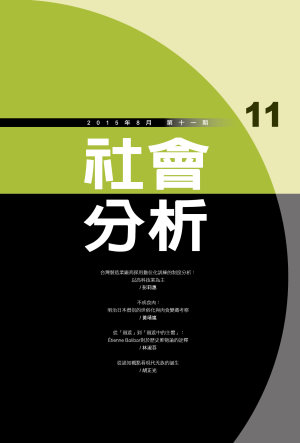Hot News

- 出版單位:東吳大學社會系;輔仁大學社會系;世新大學社會心理學系
| 中文篇名 |
不戒食肉:明治日本僧侶的世俗化與肉食變遷考察 免費試閱 | |
|---|---|---|
| 英文篇名 |
An Analysis on Secularization of Buddhism and the Transformation of Meat-eating Trend among Buddhist Monks in Meiji Japan | |
| 作者 | ||
| 中文摘要 |
1872年明治政府公告開放僧侶肉食後,宗教界出現支持的開明派與反對的傳統派兩聲浪,當時以後者占優勢,但於1900 年代起,各宗派卻陸續解除宗規上的食肉禁令。本研究企圖回答何以屬於大乘佛教體系的日本僧侶,不同於台灣等地區的僧侶可食肉、娶妻?此變化為何會出現於1900 年代?研究指出,此佛教各派態度的轉向一方面相應於當時愈加蓬勃的國家主義,另一方面則是嘗試回應社會上瀰漫的「僧侶無用論」的焦慮使然。自幕府末期起,僧侶社會地位愈加低落,並在明治政府神道路線下,與政治核心的聯繫愈趨薄弱,佛教界除了無法繼續以「檀家制」維持財源,更是上繳大量土地與財產給明治政府,無論是經濟、政治、社會地位皆難以維持明治前的優勢。初期雖然嘗試強調「世俗二分」、訴求重整戒律以維持社會地位,但在約20年間中發現,此舉並未能有太大作用,轉而訴求「進入社會」之下,相應於當時國家主義的社會氛圍,遂呈現「護國佛教」此政治上的附和取徑,而肉食作為文明象徵與國家政策的一環,成為僧侶食肉的正當化契機。 | |
| 英文摘要 |
Why monks of the Japanese Buddhism, as a tribe of the Mahayana Buddhism, can eat meat and get married, and why such changes occurred in the 1900s? After the Meiji government opened meat-eating diet to Buddhist monks in 1872, there were two factions in the Japanese religious sector: the liberals who came out in support and the traditionalists who expressed opposition, with the latter being dominant at the time. Yet after the 1900s, various denominations had lifted the ban of meat-eating from their religious restrictions. By historical reviews, this paper aims to illustrate such transformation undergone by various tribes of Buddhist monks, and further demonstrates such dismal change as a response to the rising and flourishing nationalism in Japan, as well as a survival strategy in response to the popularizing impression about “useless monk” in modernizing Japan. Since the late of Tokugawa Shogunate era, due to the rise of Shintoism in Meiji period, the social status of Buddhist monks had become more and more inferior, and their connection to the core political camp had turned weaker and weaker, too. The Buddhist sector could no longer maintain their stable financial resource through the “Denka system”, and even has to surrender a large amount of land and property to the government. In other words, the Buddhist sector could not maintain their superiority in respect of economy, politics and social status as in the pre-Meiji era. At first, the Buddhist sector tried to stress their religious abstinence and rationalize their rules and regulations to differ themselves from common people. After 20 years or so, it was found that this strategy did not have much effect. They had turned to an alternative solution from the theory of “entering the society”. Complemented by the social atmosphere of nationalism at the time, the theory of “Buddhism to guard the nation” arose, seeking justification from a new Buddhist doctrine by “civilized” carnivorous diet with meat-eating as a symbol of civilization and national policy. Consequently, meat-eating has been legitimated as a part of civilization and nationalism in Japan. | |
| 關鍵詞 |
肉食妻帶、世俗化、明治日本、佛教、國家主義、Meat Diet and Marriage、secularization、Meiji Japan、Buddhist、Nationalism | |
| 刊名 | ||
| 期數 | ||
| 起訖頁 |
069-105 | |
| 出版單位 |
東吳大學社會系;輔仁大學社會系;世新大學社會心理學系 | |
| DOI | ||
| QRCode |
| |
| 上一篇 | ||
| 下一篇 |


